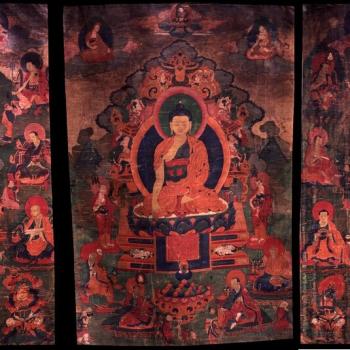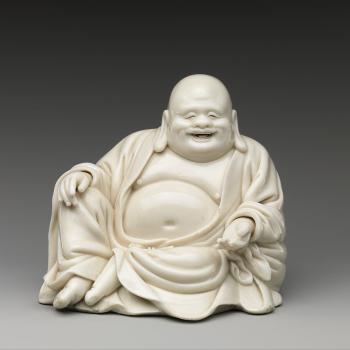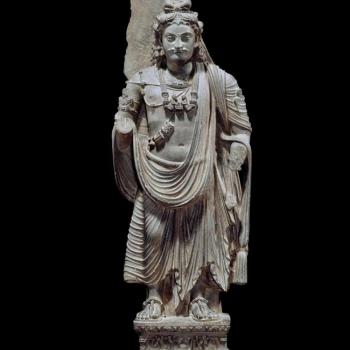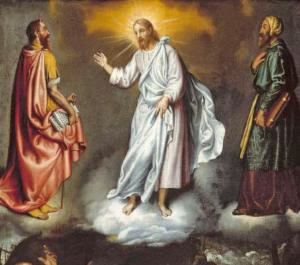
It is no secret that Judea at the time of Christ was a hotbed of messianic expectation. The Roman occupation, alongside the fact that now two dynasties of non-Davidic descent had sat upon the throne of the kingdom, had created a perfect atmosphere for apocalyptic thinking. But just because the coming of the messiah was being eagerly awaited by so many, this did not mean that everybody was in agreement about the form the destined savior would take. There were, indeed, several different ideas about who the messiah would be and what he would accomplish. A brief glance at these various messianic conceptions will help us to understand that while Christianity might have offered a unique interpretation of the prophesized redeemer of Israel, it did not arise out of nowhere. The climate of messianic speculation swirling in Judea allowed new interpretations of the old messianic prophecies to take root and for new understandings of the messiah to emerge. Everyone seemed to be thinking in new ways about the coming messianic age.
No doubt, the image of the messiah as the seed of David and future King of Israel remained the most popular version of the messianic idea. This was the messianic mantle which so many rebel leaders and founders of sects would claim for themselves in these turbulent years. Indeed, Jesus himself would base his own messianic claim upon the Davidic conception of the messiah. But there were always other possibilities. One such was the notion of the “Second Moses.” This idea found its basis in a passage of Deuteronomy in which Moses promises the people of Israel, “The Lord your God will raise up for you a prophet like me from among your own people; it is to him you must listen” (Deut. 18:15). While no doubt quite obscure to modern readers of the Bible, this passage was very important in the Second Temple period. Here is the promise of a prophet of the same stature as Moses. Many concluded from it that, in the end-times, a new figure would emerge to lead Israel out of captivity and establish a new covenant just as the original Moses had done. And what better time for him to appear and work these feats than under the doubly foreign rule of the Romans and of Herod?
The idea of the new Moses was chiefly promulgated by and is mostly associated with the Samaritans. This religious group dwelt in the north of Judea, in what had once been the northern kingdom of Israel (also called Samaria). and represented a distinct northern form of the biblical faith that clashed with a Judaism that had its roots in the southern kingdom of Judah and its capital, Jerusalem. Judaism, and the Bible as it has come down to most of us, portrayed the northern kingdom as a hotbed of idol-worship and blasphemy and its destruction by Assyria as an act of divine retribution. In the Jewish account, the northern tribes of Israel were then scattered to the four corners of the earth. The location of the Lost Tribes of Israel has become a perennial fixation for believers up until the present day and their eventual return to the land of Israel forms a key component of both Jewish and Christian apocalyptic thought.
But the Samaritans held, and still hold, a quite different position. The lost tribes had never been lost, for they were the people of the northern tribes and the northern kingdom of Samaria. Their separateness from the Jewish people was merely a continuation of the old division between Israel and Judah. As Benyamin Tsedaka states on the official website of the modern Samaritan community, “For the first time in the Second Temple Period, each side took on a separate national identity. Jews as descendants of the Kingdom of Judah, and Samaritans as descendants of the Kingdom of Samaria … The Israelite Samaritans remained loyal to the Pentateuch and consecrated only the five books of Moses: Genesis, Exodus, Leviticus, Numbers and Deuteronomy” (Tsedaka “History”). It their view, it had been the Jewish people who had gone astray by expanding the Bible beyond these five books and by placing God’s temple in Jerusalem instead of at the Deuteronomic location of Mount Gerizim. Thus, Samaritanism, while holding an equal claim of descent from the ancient Israelite faith and certainly as much a part of Judean intellectual discourse in the Second Temple Period, had a decidedly distinct character when compared to the Judaism of that era.
This was true in how it viewed the messiah as well and, indeed, in what it called him—the word “messiah” itself never gained currency among the Samaritans. And the idea of the messiah as the heroic heir of David could never take root among them. One reason for this was, as heirs to the northern kingdom, they rejected the southern kingdom’s royal line—the House of David—out of hand. The other was that, as they only recognized the five books of Moses as holy—though they also revered the book of Joshua—the Samaritans’ Bible had no trace of the messianic conception that had been developed in Isaiah, Jeremiah, Ezekiel, and the other prophetic books of the south. But this did not mean that the Samaritans avoided getting drawn into the general climate of messianic expectation. They, too, hoped for the future redemption of the people of Israel at the hand of a great hero of God. But with only the Pentateuch to guide them, the Samaritans were left with a single passage that seemed to foretell a future savior, the new Moses prophecy of Deuteronomy 18.
And so, from these few lines, they developed the idea of the “Taheb” or “Returner.” Reinhard Pummer describes this belief in The Samaritans: A Profile, “according to Samaritan beliefs, at the end of this age a prophet like Moses will appear who is called in Aramaic … “Taheb,” i.e., the returning one. Although this title occurs in Samaritan sources only from the fourth century C.E. on, the concept goes back to an earlier period and designates the prophet like Moses whose return is promised in Deuteronomy 18:15 and 18 … One of the functions of the Taheb is to bring back the holy Tabernacle” (Pummer 57).
The Returner’s apocalyptic role is clear, and is made even clearer by the statement of faith on the Samaritans’ website, “In addition, we believe in the Taheb son of Joseph, The Returning One, The Restorer, A Prophet like Moses. He will appear on the Day of Vengeance and Recompense in the Latter Days” (Tsedaka, “Religion”). The Taheb is a figure who will appear in the Last Days to reestablish the true faith of Israel and restore the original tabernacle to Mount Gerizim. He thus combines the roles of prophet and messiah into a single impressive figure, patterned on the figure of Moses.
That being said, while the Samaritans were the main proponents of this Mosaic messiah, the idea also found favor among Jewish circles in the Second Temple period. The Deuteronomic prophecy is cited in the Dead Sea Scrolls and is one of two messianic ideas that lie behind Revelation’s account of the two witnesses (usually glossed as Moses and Elijah) and perhaps also the appearance of Moses with Elijah at the Transfiguration of Jesus. Clearly, it had a certain currency among the devout of Second Temple Judaism. Indeed, it could appeal to anyone who wanted the messiah to be a figure with greater religious authority than the divinely inspired but ultimately secular ruler of the new David prophecies. And no greater religious authority could be imagined than Moses. Thus, there was a certain appeal in the idea of Moses either returning as himself or being reimbodied in a new prophet in order to set things straight for the people of Israel.
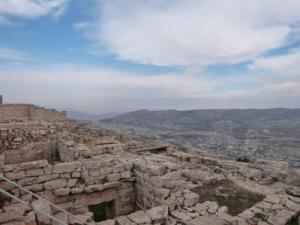
But Moses was not the only prophet who was looked upon to fulfill a messianic role. As the mentions of him with regards to Revelation and the Transfiguration above suggest, Elijah was also expected to put in an appearance at the end of days. Having departed for heaven in his chariot of fire instead of dying an earthly death, Elijah had the best chance of any of the prophets to make a grand return as history reached its climax. The Jewish Encyclopedia states, “In the second half of the first Christian century it was expected that Elijah would appear shortly before the coming of the Messiah, to restore to families the purity which in the course of time had become doubtful” and further notes that “the notion which prevailed at the time of the origin of Christianity” was “that Elijah’s mission as forerunner of the Messiah consisted mainly in changing the mind of the people and leading them to repentance” (Hirsh et al., “Elijah”). Thus, Elijah, like the new Moses, would not only lead a renewal of faith but a reestablishment of the pristine and pure faith that had long since been corrupted. This made the renewal of Israel as much a spiritual as a physical regeneration.
Of the two, however, the Elijah prophecy is by far the more familiar to us today. For while modern Samaritans seem to be the only ones who still pay much attention to the second Moses prophecy, the return of Elijah remains a central part of the Jewish faith. Indeed, one of the chief traditions of Passover in pious Jewish households is to set a place at the table for Elijah in hopes of his momentous reappearance. And Christians too are well aware of the idea given that the New Testament shows both John the Baptist and Jesus responding to claims that they are the returned Elijah. But while the Elijah prophecy certainly became the more popular of the two, both it and the new Moses prophecy demonstrate a shared unease with leaving the salvation of Israel entirely up to a royal savior. A prophetic redeemer, either alone or working in concert with the kingly messiah, settled this concern by ensuring that the highest of religious authorities had a hand in guiding Israel to its eternal salvation. Thus, for anyone who placed a premium on maintaining Israel’s religious foundations into the Last Days, the new or returning prophet made for an alluring idea.
One such group that did attribute considerable importance to the maintenance of Israel’s religious hierarchy was the sect that wrote the Dead Sea Scrolls. They too evinced concerns about leaving Israel’s promised future entirely in the hands of a king. But while they also cited the prophecies of Elijah and Moses, their primary solution to the puzzle of a too-worldly messiah was even more unique. We shall discuss that solution in greater detail in the next entry.
Works Cited
Pummer, Richard. The Samaritans: A Profile. Grand Rapids: William B. Eerdmans Publishing Company, 2015.
Hirsh, Emil G., König, Eduard, Schechter, Solomon, Ginzberg, Louis, Seligsohn, M., and Kohler, Kaufman. “Elijah.” The Jewish Encyclopedia, 1906. ELIJAH – JewishEncyclopedia.com
Tsedaka, Benyamin. “History.” Israelite Samaritan Information Institute. History: Samaritans from Ancient Times to the Present Day (israelite-samaritans.com) “Religion.” Israelite Samaritan Information Institute. Religion of the Israelite Samaritans : The Root of all Abrahamic Religions (israelite-samaritans.com)
Deuteronomy. The Oxford Study Bible, edited by M. Jack Suggs, Katharin Doob Sakenfeld, and James R. Meuller. New York: Oxford University Press, 1992. 181-219.



